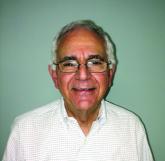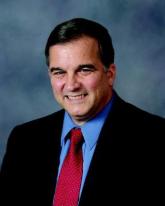News

NAMDRC legislative initiatives take shape
- Author:
- Phil Porte
NAMDRC issues focus on access to pulmonary rehabilitation and CMS’s move to include home mechanical ventilation in competitive bidding.
News

CMS proposal threatens entire landscape for home mechanical ventilators
- Author:
- Phil Porte
Under current law, Medicare is required to pay for certain ventilators under a “frequent and substantial servicing” payment methodology.
News
NAMDRC update
- Author:
- Phil Porte
NAMDRC’s mission statement clearly signals its commitment to improve access to quality care for patients with respiratory disease.
News
NAMDRC update
- Author:
- Phil Porte
NAMDRC’s mission statement clearly signals its commitment to improve access to quality care for patients with respiratory disease.
News
NAMDRC News
- Author:
- Phil Porte
NAMDRC will host its 42nd Annual Educational Conference March 14-16, 2019, in Sonoma, California.
News

NAMDRC Legislative and Regulatory Agenda Once Again Focuses on Patient Access
- Author:
- Phil Porte
NAMDRC Legislative and Regulatory Agenda Once Again Focuses on Patient Access.
News

Low payment for pulmonary rehab explained
- Author:
- Phil Porte
A new review of 2015 Medicare data clearly points fingers at hospitals for the historically low payment rates for pulmonary rehabilitation.To...
News
Bipartisan Budget Act (BBA) of 2015 threatens growth of pulmonary rehab
- Author:
- Phil Porte
In late 2015, Congress passed the Bipartisan Budget Act (BBA) to address numerous wide-ranging budget concerns, including issues related to...
Article
NAMDRC and Partners Focus on CMS Threat to Pulmonary Rehabilitation
- Author:
- Phil Porte
News
NAMDRC Signals Concern Over CMS Proposed Changes in Payment Methodology
- Author:
- Phil Porte
News

NAMDRC tackles archaic home mechanical ventilation Medicare rules
- Author:
- Phil Porte
News

NAMDRC Hosts a 2-Day Roundtable on “Respiratory Compromise”
- Author:
- Dr. Dennis E. Doherty, FCCP
- Phil Porte
